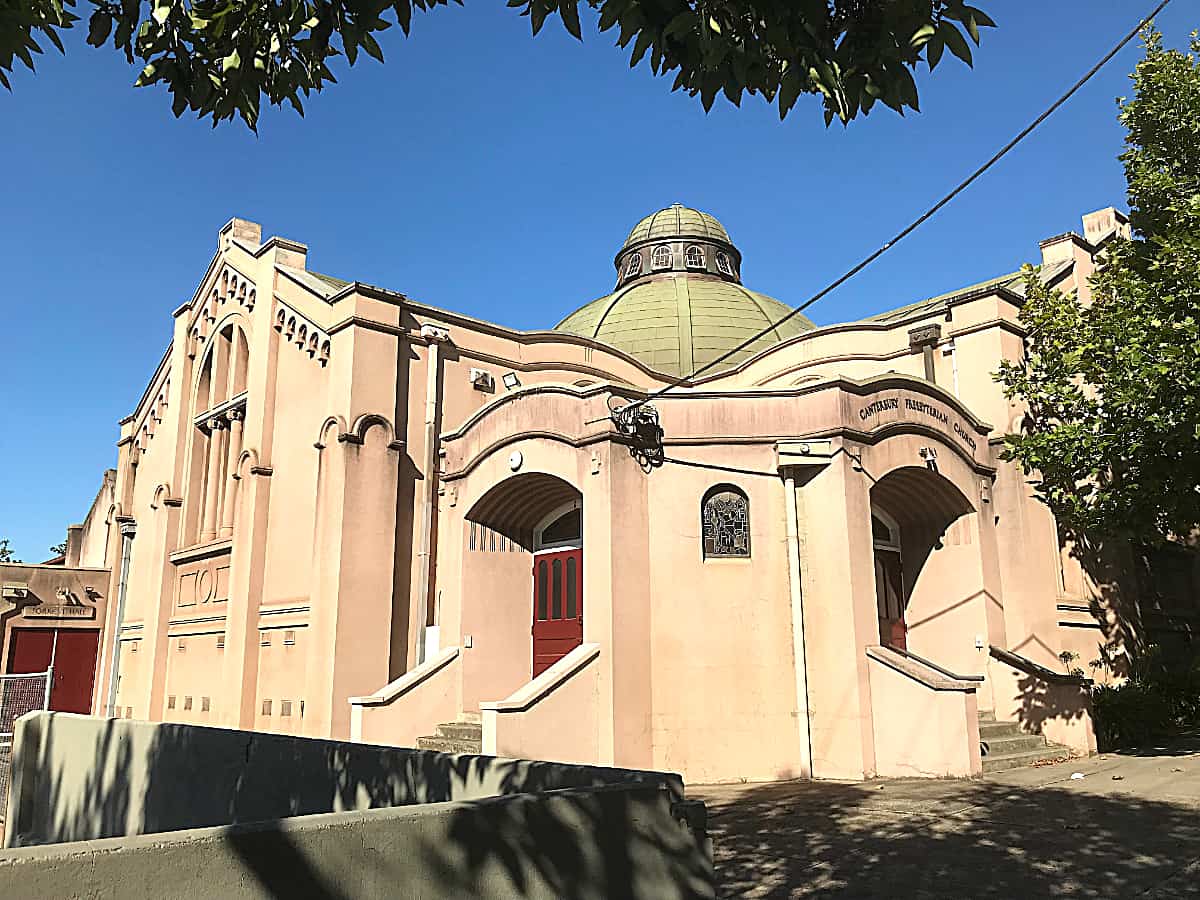
Canterbury Presbyterian Church – exterior
(photograph by John Maidment [3 March 2022])
Historical and Technical Documentation by John Maidment
© OHTA, March 2022

Canterbury Presbyterian Church – exterior
(photograph by John Maidment [3 March 2022])
Historical and Technical Documentation by John Maidment
© OHTA, March 2022
The foundation stone of the new Presbyterian Church, Canterbury was laid on 19 February 1927.1 The building was designed by architect W.H. Ford, who lived nearby at 7 Sefton Place, East Camberwell.2 Its style was neo-Byzantine, a great rarity in Melbourne at the time, with a splendid internal coffered dome. Elaborate stained glass was fitted, considered to be the work of accomplished artist Jock Frater3, with some smaller windows later designed and made by Alan Sumner.
Ford’s design was illustrated in The Argus, 7 January 1927, p.7:
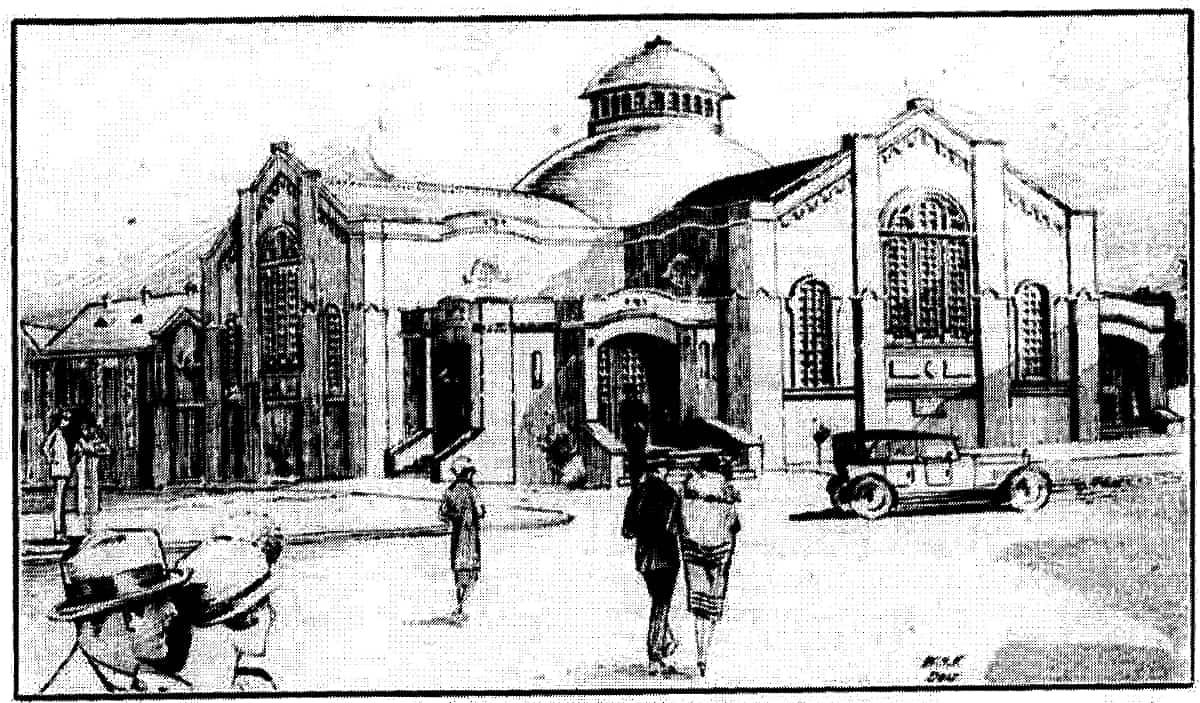
NEW PRESBYTERIAN CHURCH.
Dedication and Opening.
An Architectural Departure.
A departure in church designing was made with the building erected for the Presbyterians at Canterbury, and opened and dedicated on Saturday afternoon. The architecture gets completely away from the Gothic or customary form for places of Christian worship, and arrests attention. The roof, in the centre, takes the form of a dome, with a cupola on the apex, in which are leadlights that at night will serve as a beacon for many miles around. It is cemented on all sides, and has a solid appearance without sacrificing any artistic beauty. The interior is most striking, carried out on the amphitheatre plan, with pure white walls relieved by a design that harmonises with the whole and the imposing central dome, which is compact of converging columns. The lighting is perfect, and the arrangement of seats in relation to the pulpit makes for audibility throughout. The building cost £10,000, and replaces one at the rear that did service for years, and may now be used as a school hall.4
The building, designed by Mr. W.H. Ford and constructed by Mr. W.G. Ireland, is situated in Canterbury road, in front of the old church, which will now be used for Sabbath School purposes. The design of the church is distinctive and of artistic and imposing appearance, the outstanding feature being the dome, crowned by a cupola, with twelve ventilating leaded glass windows. The exterior of the church is finished in cement. Seating accommodation for approximately 500 people is so arranged that all centres around the pulpit, to the left of which are situated the organ and choir stalls. A subdued and beautiful atmosphere is obtained through the medium of a number of stained glass windows depicting the Ascension, the Last Supper, the Light of the World, Christ blessing the children, the Good Shepherd, and Christ stilling the storm.5
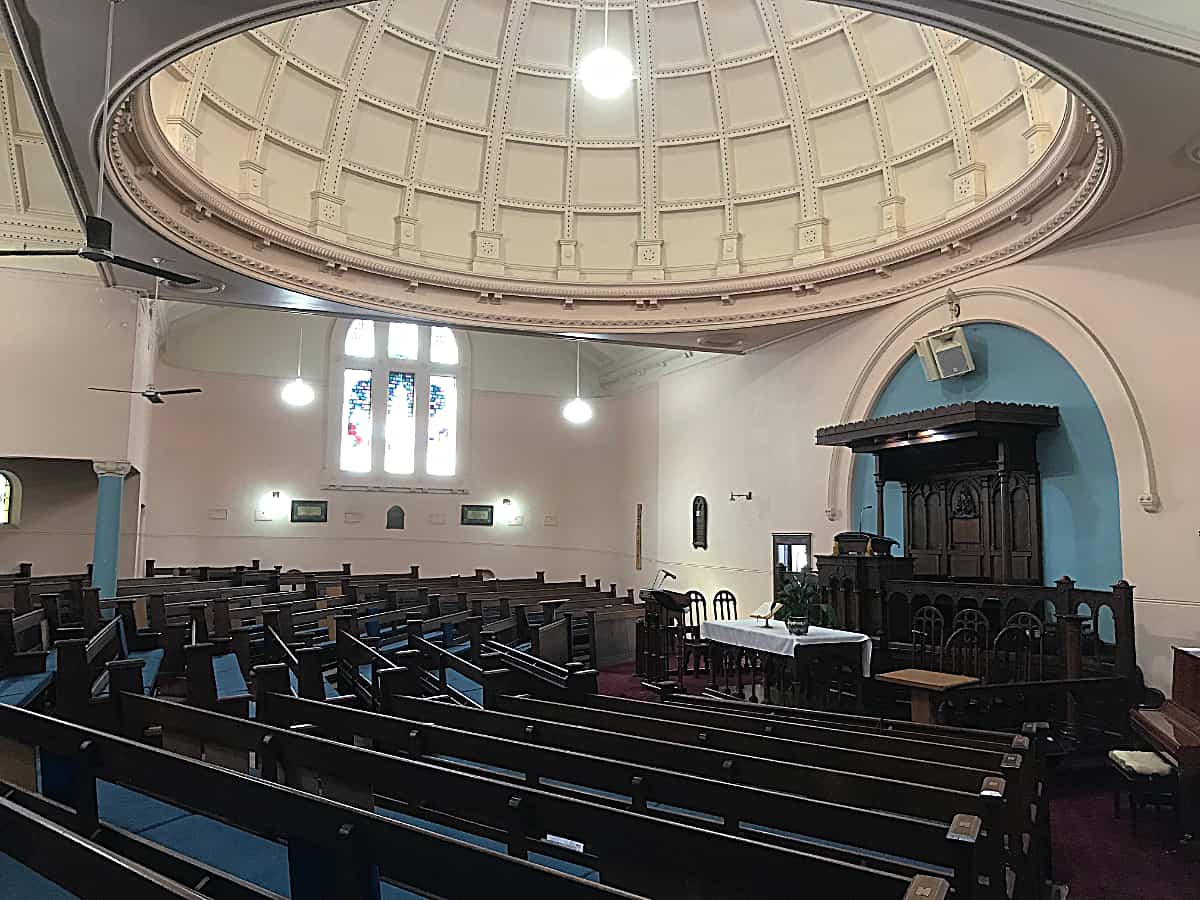
Canterbury Presbyterian Church – interior
(photograph by John Maidment [3 March 2022])
The organ was built by Frederick Taylor and opened shortly after the church itself had been unveiled:
ALL-AUSTRALIAN ORGAN
First Recital at Canterbury Next Week
On an all-Australian organ, made by Mr F. Taylor, of Hawthorn., for the Presbyterian Church, Canterbury, the City Organist (Dr. W.G. Price) will give the opening recital on February 15.
Mr Taylor claims his work as a direct contradiction to the claims made that organ pipes, made and "voiced" in Australia, do not equal those from abroad.
The timbers of the organ, which was designed and built by Mr Taylor at his Hawthorn factory, are 95 per cent Australian, and the pipes are entirely Australian-made.
The organ has seven stops in the great, seven in the swell, and three in the pedal, comprising 906 pipes. The action is on the tubular pneumatic system.
Nine men took four months to build the organ, which cost between £1300 and £1400.
Mr Taylor gained all his experience in Australia.6
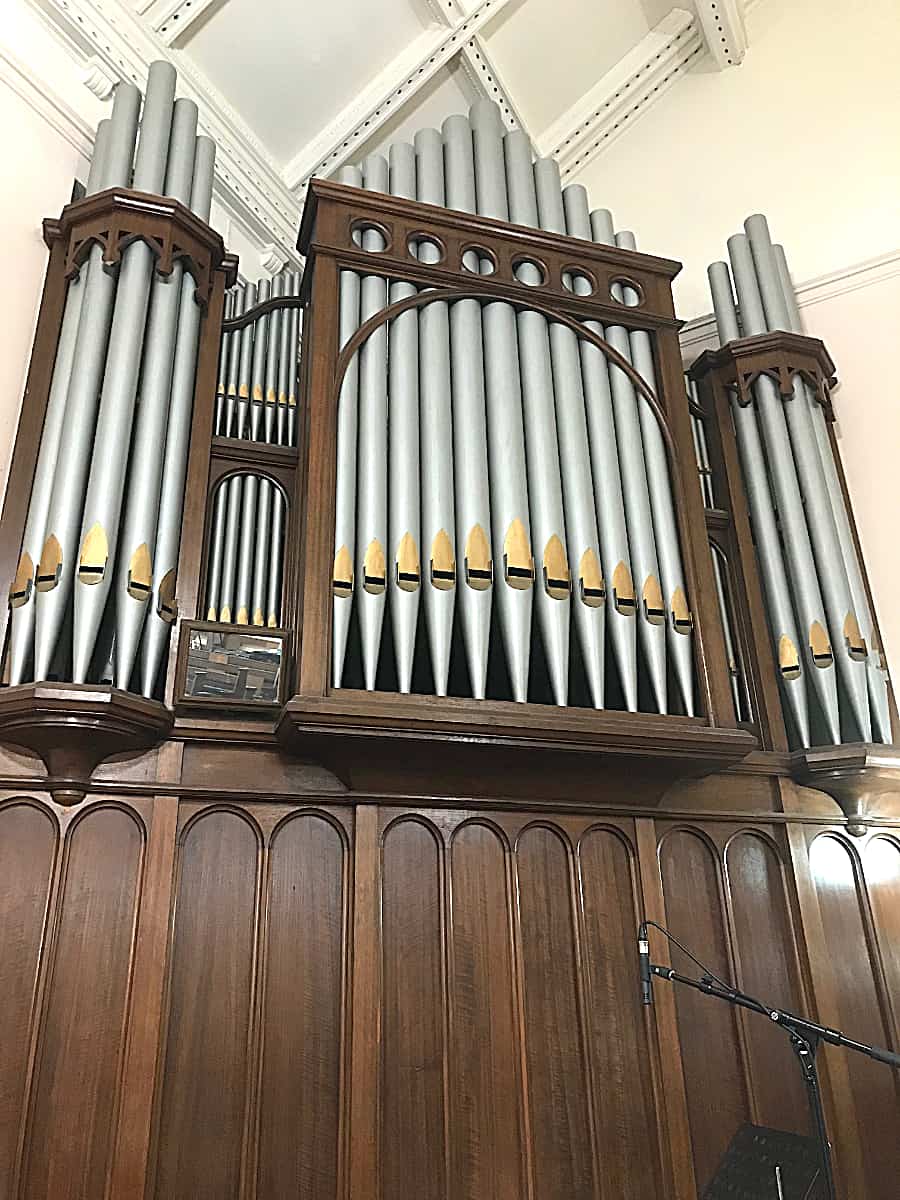
Canterbury Presbyterian Church – organ case
(photograph by John Maidment [3 March 2022])
| GREAT Open Diapason Clarabella Dulciana Viol Sourdine Principal Harmonic Flute Fifteenth Great Octave Swell to Great |
8 8 8 8 4 4 2 |
||
| SWELL Contra Viola Open Diapason Gedact Gamba Vox Celeste Gemshorn Closed Horn Swell Sub Octave Swell Octave Tremulant |
16 8 8 8 8 4 8 |
TC |
|
| PEDAL Bourdon Vio[la] Bass [Flute] Great to Pedal Swell to Pedal |
16 8 8 |
A [from Great?] A |
Compass: 61/30
Tubular-pneumatic action
Detached stopkey console7
The organ incorporated a fine case, the intervening flats consisting of two storeys.
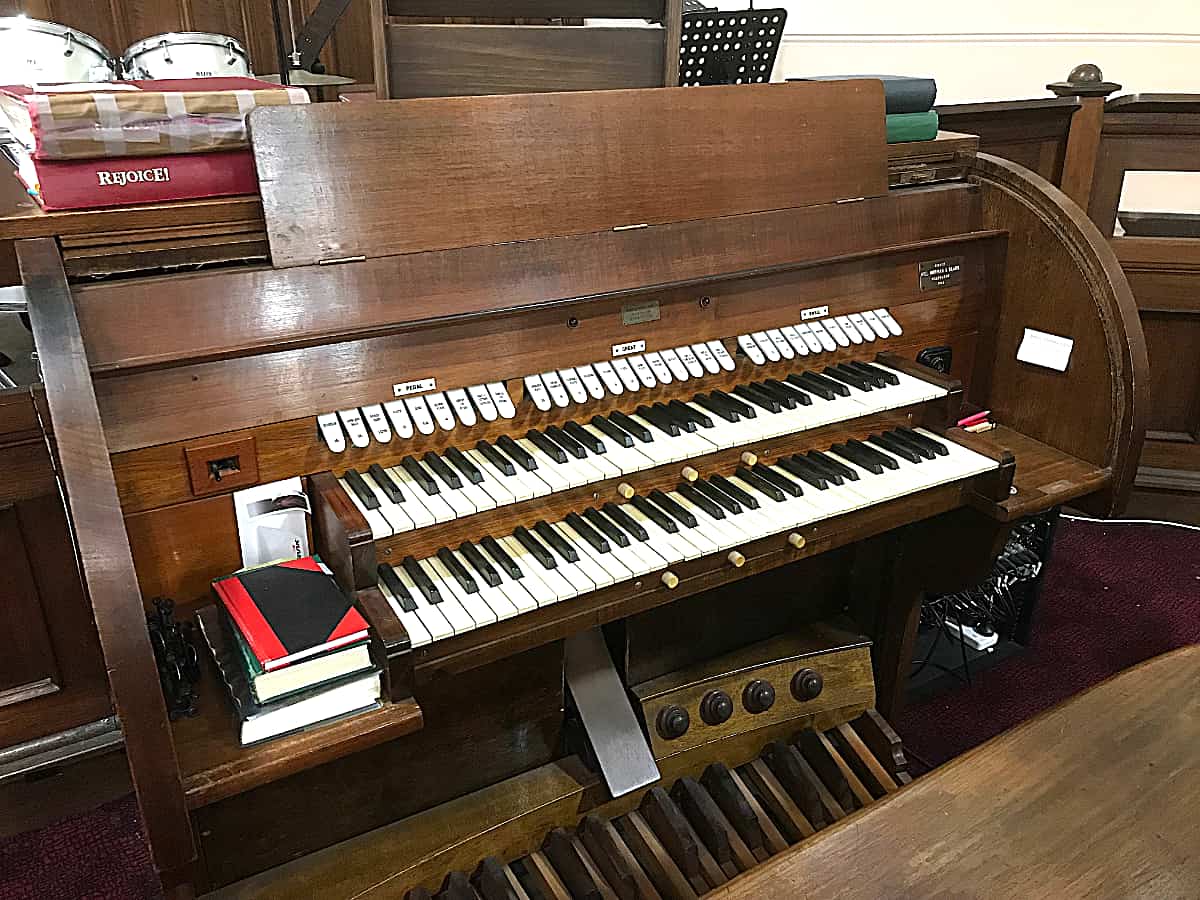
Canterbury Presbyterian Church – console
(photograph by John Maidment [3 March 2022])
In 1960, the organ was extensively rebuilt by Hill, Norman & Beard (Australia) Pty Ltd, the firm’s order number V480.
The work comprised the following:
• Conversion of the action from tubular-pneumatic to electro-pneumatic;
• Installation of new stopkeys, pedal board, toe pistons and swell pedal but retaining the Taylor console shell, bench, ivory manual keyboards and keycheeks, thumb pistons and brass nameplate;
• Removal of the Swell Contra Viola and Closed Horn and their replacement with a Trompette and Mixture 3 ranks;
• Removal of the Great Viol Sourdine and Harmonic Flute;
• Provision of a Lieblich Bass (Bourdon) extension unit extended to 4, 2-2/3 and 1ft pitches;
• Provision of additional pedal stops through borrowing and extension.
| GREAT Lieblich Bass Open Diapason Claribel Flute Dulciana Octave Flute Quint Flute Super Octave Sifflöte Swell Sub Octave to Great Swell to Great Swell Octave to Great |
16 8 8 8 4 4 2-2/3 2 1 |
A A A |
|
| SWELL Open Diapason Gedeckt Viole de Gamba Viole Celestes Gemshorn Mixture 15.19.22 Trompette Sub Octave Unison Off Octave Tremulant |
8 8 8 8 4 III 8 |
TC |
|
| PEDAL Bourdon Lieblich Bass Gross Quint Flute Quint Octave Flute Great to Pedal Swell to Pedal Swell Octave to Pedal |
16 16 10-2/3 8 5-1/3 4 |
B A A B A B |
Compass: 61/30
Electro-pneumatic action
Detached stopkey console
Balanced mechanical swell pedal8
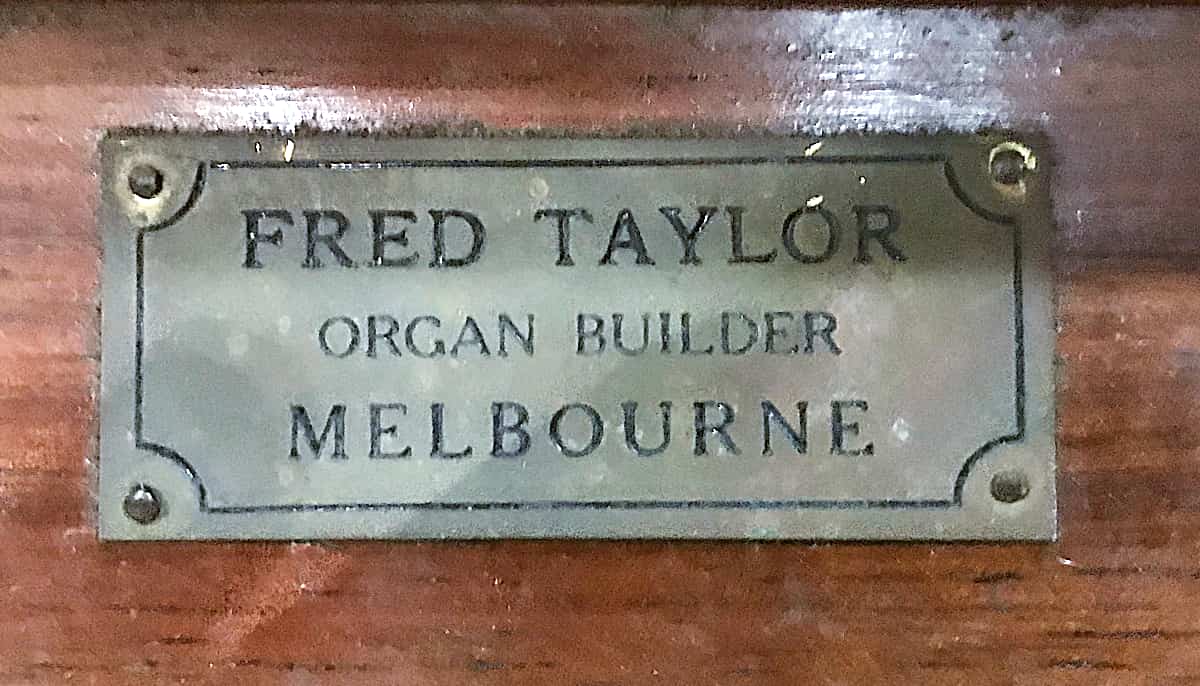
Canterbury Presbyterian Church – Taylor nameplate
(photograph by John Maidment [3 March 2022])
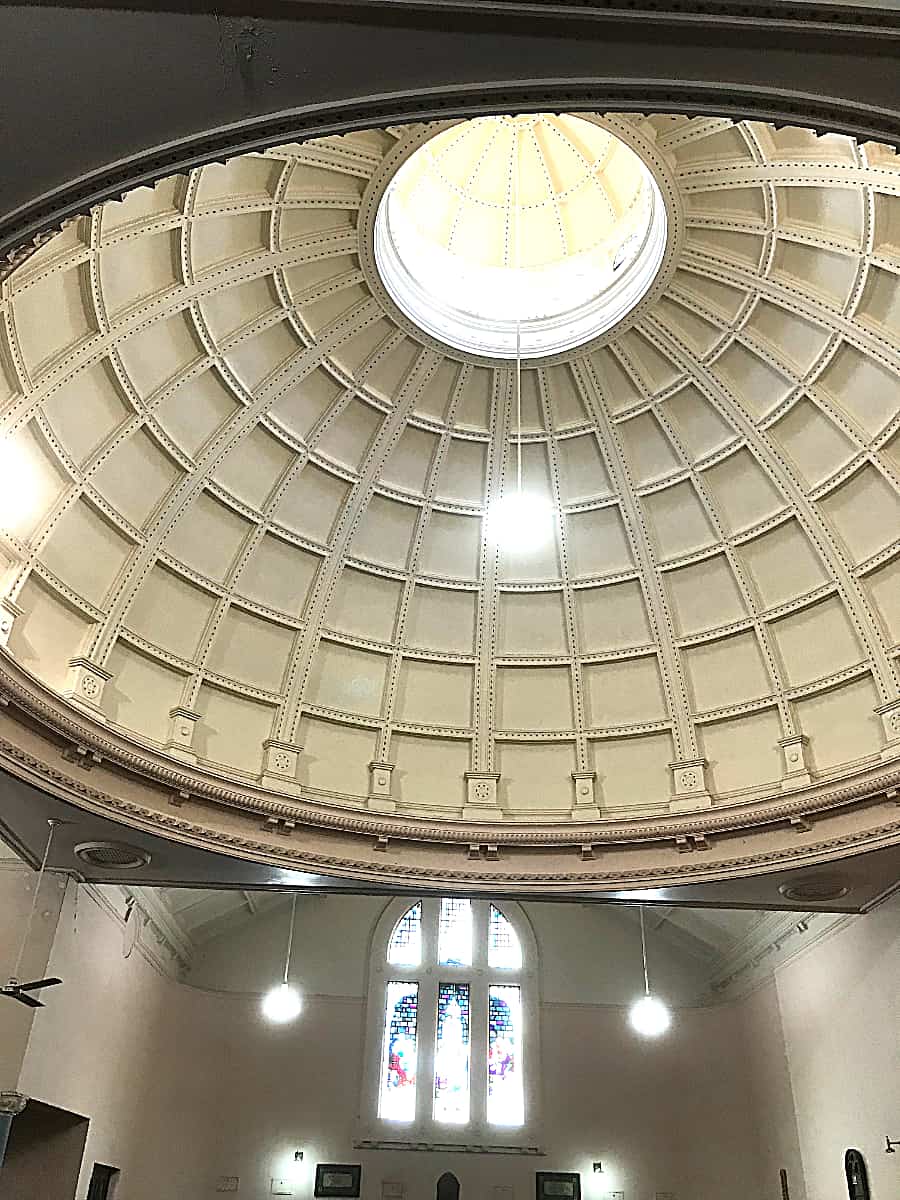
Canterbury Presbyterian Church – internal dome
(photograph by John Maidment [3 March 2022])
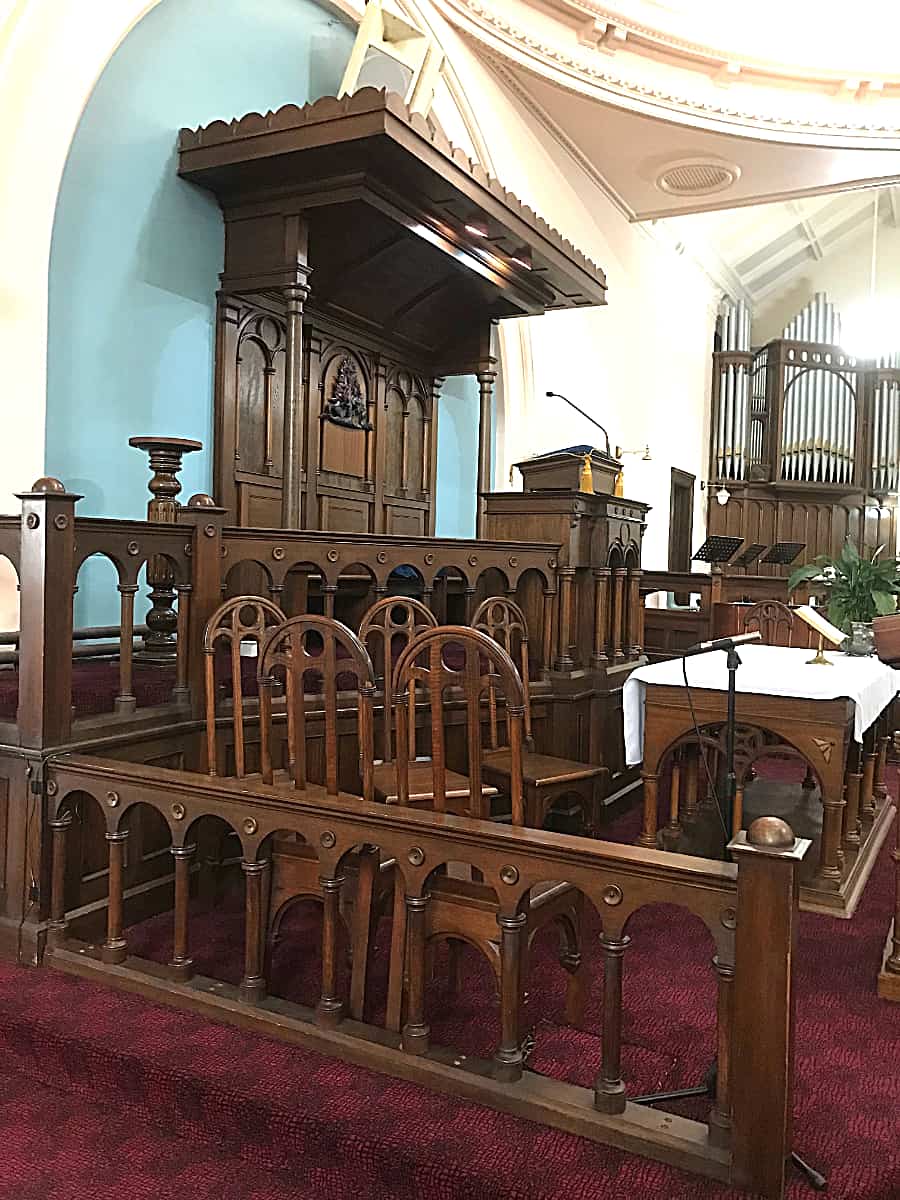
Canterbury Presbyterian Church – pulpit
(photograph by John Maidment [3 March 2022])
1 Box Hill Reporter, 25 February 1927, p.2
2 Little is known of Ford’s career. A surviving example of his commercial work is the Renzow Garage (now Cycles Galleria) on the northern side of Riversdale Road, Camberwell, just west of Camberwell Junction. His house in Sefton Place appears to survive
3 Personal communication Dr Bronwyn Hughes, 3 March 2022
4 The Age, 7 November 1927, p.15
5 Box Hill Reporter, 11 November 1927, p.8
6 The Herald, 11 February 1928, p.14. Taylor had an antipathy for Dr Price in his selection of a new British-built organ for the Melbourne Town Hall
7 Specification noted by Douglas Rankin, pre-1960
8 Specification noted by John Maidment 1966 and 2022